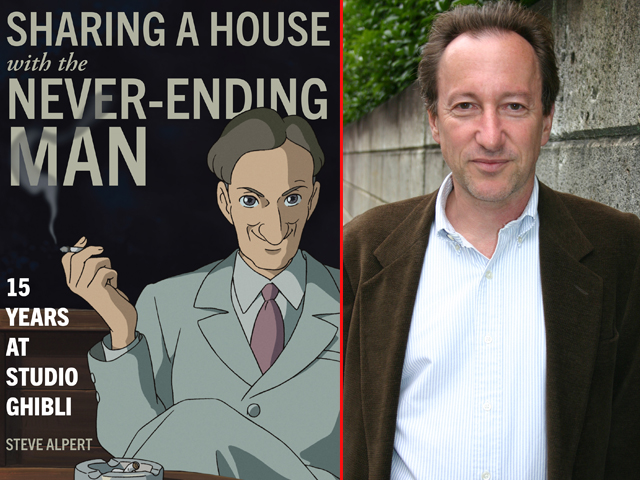
An inside look at Studio Ghibli at a crucial time in its history.
Hayao Miyazaki and Studio Ghibli can now be considered household names around the world, but it wasn’t always that way. Even after quickly finding success in Japan with its hits Nausicaä of the Valley of the Wind and My Neighbor Totoro, it wasn’t until 1997’s Princess Mononoke that they become heavily involved in creating an international presence and started earning widespread critical acclaim abroad.
To accomplish this, in 1996 American Steve Alpert was brought on as the head of the international division for Studio Ghibli and its parent company at the time, Tokuma Shoten. Given Ghibli’s current success this might seem like an easy task, but at the time Alpert had to constantly juggle the unbending integrity of Miyazaki and reluctance of major companies like Disney and Miramax to take risks on a then-largely unknown animation studio.
As a result, Alpert was sent to work around the globe, meeting various larger-than-life personalities that matched Ghibli’s own characters in terms of outlandishness.
All of this has been captured in his upcoming book Sharing a House with the Never-Ending Man. Not only is it an amazing look at the inner-workings of Studio Ghibli but a great example of life and business in Japan as a whole. So, it’s a real pleasure to be able to speak with Steve Alpert and learn a little more about it all.
– Thanks for taking the time to talk with us today. I really enjoyed your upcoming book Sharing a House with the Never-Ending Man, and I got to say… Show business is pretty wacky isn’t it?
Steve Alpert: Hi, thanks for asking. Yes, “wacky” is exactly the right word.
– You mentioned in the book that while dubbing the English version of Princess Mononoke the “Ugh” from Claire Danes’ famous line “Ugh, I smell like a human” was accidentally cut off. So, you had to have a tape with the “ugh” shipped from LA to New York to re-insert it. How much did that “ugh” end up costing?
Alpert: I actually never found out. More than it should have, is what I can say.
– On the cover of your book is a drawing of the character Hans Castorp from the film The Wind Rises. There’s clearly more than a passing resemblance to you, and you were also the voice of Castorp in the Japanese version.
Alpert: Yes the physical appearance of the character and the way Castorp moves is based on me. I also did the voice in the Japanese version. My understanding however is that the character in the film was based on Richard Sorge, an historical character, a spy with connections to Germany and Russia.
– How much of Castorp did Miyazaki base on you?
Alpert: As far as the physical resemblance goes, I’ve been telling people that Miyazaki, with his superb eye for personality, got my movements, and essentially me, physically, spot on. My one complaint however is that the nose is far too big. A nose that big and I would not have been able to get food into my mouth, and I would not have been able to look down and see my feet (okay two more things: maybe I don’t look that old, and I don’t smoke). I think that Miyazaki felt that with my ethnic background (Russian/Polish), foreign language abilities, and tendency to sit quietly, listen and unobtrusively absorb information, had I lived in that time period, I could have been that spy (although sitting in a Ghibli meeting taking notes would have been less dangerous than surreptitiously reporting on the pre-War Japanese military).
– The “never-ending man” in the title of the book refers to Hayao Miyazaki, and the book is full of insights about him of course, but I thought the real star of the story was Yasuyoshi Tokuma, the head of Ghibli’s former parent company.
Alpert: I really, really have to thank you for that. Yes Yasuyoshi Tokuma was an extremely fascinating man and I felt privileged to know him a little and witness him in action. You just couldn’t help but like him.
– He’s like an agent of pure chaos through the whole thing.
Alpert: He was a personage from another era. No matter what your rational brain was telling you, it was hard to resist his charm. But at the same time liking him was easier if you were in a position to be safe from him. Toshio Suzuki protected me from Mr. Tokuma’s dark side.
▼ Toshio Suzuki (left) and Steve Alpert (right)
Alpert: The creative people under his umbrella loved him because he never interfered with their work or pressured them creatively to do things just for the sake of commerce.
– And in doing that he built an empire purely on his own kinetic energy to the point that it seemed to collapse the moment he died.
Alpert: True, the decline in the Tokuma businesses was in part due to the absence of its charismatic head. But it was also the result of the way the entertainment/publishing business was changing then. The Tokuma businesses were mostly old-school, and either slow to adapt to the change from analog to digital, or not agile enough to do it, or just built on a business model that had changed.
– And yet, Tokuma had, albeit accidentally, made the amazingly fortunate decision to keep Disney’s hands off the digital rights to all Ghibli works, which probably saved a lot of the back catalog from getting buried in the West.
Alpert: Mr. Tokuma got the advice to hold on to the digital rights from the chairmen of some of Japan’s most famous companies. He may not have understood the meaning of the word “digital”, but the idea of holding on to something that might be valuable would have appealed to him. For me, the big surprise was that Disney didn’t think digital rights were a big deal. Of course you have to think back to those bygone days when engineers were doing their best to get 90 minutes into a single one-sided disk and failing. No one knew if they would ever succeed.
– In many ways Tokuma seemed the polar opposite of the somewhat reclusive and modest Miyazaki and yet Miyazaki said he respected Tokuma greatly, even being the key speaker at his funeral. Why do you think that was?
Alpert: Mr. Tokuma’s personality was that of a public person. He had a larger than life persona that he actively cultivated. As far as I can tell, even in private he was performing. He loved an audience, big or small (preferably big). I guess you can think of it as performance art. He was very good at it. Artists respect other artists who are very good at what they do.
– How did a typical Tokuma ice cream meeting go?
Alpert: As I hope I described it in the book. A call from his secretary to come upstairs. No specific agenda. Sitting in his office and watching him make phone calls. Absorbing the art on his walls and the spectacular view of Tokyo Harbor. Looking at the partly unwrapped gifts (to him and from him) scattered around. Him sitting down and making small talk. Maybe he’d tell a story or give life advice. Eating ice cream. Silence. He thanked me/us for coming. Go back downstairs and wonder what that was about. From what I know of the late Mr. Tokuma, for all I know he just wanted to look me over and see how comfortable I was just sitting with him and eating ice cream. The theory being that if I was doing something illegitimate on the side, cheating the company in some way or doing something unauthorized in the (Disney) contracts I was negotiating, he would be able to tell by sitting there and looking me in the eye, mano-a-mano. Maybe.
Once when I was in his office he had just been given a four-foot tall plastic model of Gamera (Guardian of the Universe – a Daiei Studios property). I couldn’t contain my enthusiasm. He couldn’t wait to get it out of his office. He gave it to me and it sat next to my desk when our office was still in Shinbashi.
– I wish people gave me ice cream and Gamera figures during business meetings.
Alpert: Of course, there were times when he did have an actual agenda. Like asking me to arrange for him to meet President Clinton or Michael Eisner.
▼ Cover for the Japanese version of Alpert’s memoirs. The title loosely translates to I am a Gaijin. The Guy who Sold Ghibli to the World
– Considering how weirdly the Eisner meeting went, how disappointed were you that the Clinton meeting at the US premiere of Princess Mononoke fell through?
Alpert: Now that you mention it, I should have been disappointed. I never really thought about it because I didn’t think it would really happen. Then again, but for Monica Lewinsky…who knows?
– You were brought over to help Ghibli and other Tokuma interests overseas but originally worked with Disney and continued to work closely with them afterward. What would you say is the biggest difference between Ghibli and Disney?
Alpert: Wow. Do I have 200 pages to answer that question? So many differences.
I guess you mean the difference between Ghibli and Disney Feature Animation, not the entire Walt Disney Company which is gigantic and very diverse (Ghibli owns no cruise ships).
Size is of course the biggest difference. Ghibli makes and distributes one film every two years or so. Disney overall makes and distributes hundreds. And it’s part of a large corporation.
– True, you write about frequent interactions with Miyazaki, Suzuki, and Tokuma and yet you were never in the same room with Eisner until, ironically, you were working with Ghibli.
Alpert: Creatively, I suppose the main difference is that at Ghibli the filmmakers run the studio. At Disney there is corporate involvement, which is to say that profit motive is part of the mix. Now that’s not to say that Disney Feature Animation or Pixar is/was entirely controlled by businessmen putting commerce over art. But on the other hand, a studio run by the filmmakers can take riskier artistic decisions than one run by businessmen. At Ghibli the artists looking to push the envelope of their art in terms of style and content are the final decision makers. Not to push the analogy too far, but maybe have a look, for example, at Pixar films before and after it became a part of Disney. Businessmen like sequels. Artists like new works. If a special effect is too subtle and also expensive, a businessman decision-maker might nix it. A filmmaker might not.
– While working with Ghibli, it seems you were often thrust into the role of translator and interpreter, and in the book I though you hit the nail on the head about what a thankless job it can be, along with some great advice for other translators.
Alpert: Thank you again for noticing the thankless job of translating. However well you do it, someone will find fault with it (and they won’t necessarily be wrong).
– And even if you do an amazing job, then your success is simply measured by no one noticing. In one instance during the translation of Princess Mononoke, Miyazaki instructed you specifically to not refer to those cannons used by the soldiers as “rifles” but in the end you relented to the other sound editors and called them that anyway. Did Miyazaki ever find out about that?
Alpert: Oddly, this is not the first time I have been asked specifically about the “rifles”. Miyazaki says, and as far as I know it’s completely true, that once he’s finished with a film he does not want to watch it again. Why? He says because he always finds things that he wished he had done better (part of why Suzuki-san called him the “Never-Ending Man” – in Japanese it also means the man who never finishes).
I think if there were or had been a way not to call them rifles I would have been thrilled to discover it. It was about doing the right thing for the English version of the film. I think Miyazaki would have understood.
Did he ever find out? My book was first published in Japan in Japanese and I was told Miyazaki read it. If he came across that part, he never said anything to me about it.
– You submitted Spirited Away for a Golden Bear and personally attended the ceremony because the others didn’t want to go. By the way, I found a video of your acceptance on YouTube.
Alpert: Thanks for the clip but I don’t like watching myself on TV.
– You wrote that – although you thought he was joking at the time – Toshio Suzuki said he was going to fire you if it didn’t win. Why?
Alpert: I’m actually not sure why Suzuki-san said that. Since I didn’t actually believe it at the time I never went into it. From my perspective it was a pretty easy decision. Going to Berlin in competition was just clearly the right thing to do. I’d like to be able to claim that even though I risked being fired I did the right thing. But since I didn’t really believe I would be fired, I can’t claim that. Just being invited to be in competition in Berlin was already a win. It would be the first animated film to be accepted. Our European distributor, Vincent Maraval of Wild Bunch, said it would be huge for the film to be invited, even if it didn’t win, and I respected his expertise.
Could I actually have been fired if the film didn’t win the Golden Bear? I hate to over-use it, but I’ll sum up the situation with a haiku:
Takotsubo ya
Hakanaki yume wo
Natsu no tsuki(An octopus makes its home in an octopus trap
Evanescent dreams
Under a hazy summer moon)Berlin Film Festival. What could go wrong?
– Quite a bit as you describe in the book, but luckily it all paid off in the end and then some. Speaking of octopi living in traps, bringing Princess Mononoke to western audiences was a huge undertaking that required a great deal of work and luck to pull off properly. And as the person responsible for it all, your neck was constantly on the line.
Alpert: As I said in the book, Suzuki told me in getting Ghibli’s films distributed outside of Japan he wanted to achieve critical success and commercial success, but if not both, at least one of them. Critical success was a no-brainer (I thought) because the films are great. Really.
I was never satisfied that we achieved the kind of commercial success I thought the films deserved, although in theory we had the full power and weight of the Disney machine behind us. We got them screened and translated and seen, and that certainly was something.
▼ Alpert, Miyazaki, Suzuki and others touring Vienna
– I think it took a little time, but Princess Mononoke found its full global audience, and probably even financially continues to be a steady earner on home video and streaming and whatnot. I imagine it’s longevity was probably helped by keeping it intact, whereas Disney appeared more interested in a fast return.
Alpert: I am not a marketing expert, and having lived in Japan for 30 years, not an expert in the US market for motion pictures. But it’s my personal belief that if you try to position something not as what it is, but what you want it to be, you will not succeed. You have to let the film you’re marketing be what it is. It’s a risk sometimes. But the best results are never achieved without some risk. The Disney machine is not about taking risks.
If you compare the artwork for the US releases of Ghibli films to the Japanese artwork I think you can see how Disney tried hard to make the Ghibli films look less Japanese. Was that a good thing? In my opinion, definitely no. The people at Disney (some of the people at Disney) thought it would help. I don’t agree.
– I think there are a lot of parallels to the more recent hit film Your Name. However, despite having a similar momentum behind it, Your Name didn’t seem to make quite the same impact outside of Japan. Why do you think that is?
Alpert: I’m not familiar with how Your Name was marketed in the US. So all I can say about it is that I think the difference with Princess Mononoke might have to do with the fact that the momentum behind Princess Mononoke included the back catalogue of Ghibli films from Nausicaa of the Valley of the Wind to Pom Poko and Whisper of the Heart. Even though the Ghibli films hadn’t been released abroad, a lot of people knew about them, even if only by reputation.
– Among all the craziness of Princess Mononoke‘s release in North America you also met with the notorious Harvey Weinstein, who was heading Miramax at the time, on several occasions.
Alpert: Yes, but he was notorious for a completely different reason back then.
– In one instance he really went off on you for a bizarre reason in front of Miyazaki and Suzuki. I won’t spoil the details, but it seemed very abrupt. Did he really just go off like that or was there more of a build-up?
Alpert: Nope, there was no real build-up. We were sitting at a table in the restaurant drinking mojitos and chatting amiably and he just suddenly went off. Though Miramax was our distributor, our contract and relationship was with Disney. Miramax had just become a part of Disney and I think Harvey was told not to even mention the idea of cutting the film.
– So, I guess he didn’t like the sword. He even gave you the old, “YOU’LL NEVER WORK IN THIS TOWN AGAIN” cliché, despite the fact that you worked in Japan.
Alpert: My guess is that he was frustrated. Cutting foreign films to get them to work for an American audience was famously his thing. He probably believed that cutting would make Princess Mononoke more commercially successful in the US. He and his team may also have believed some cutting would make it a “better” film. Also from the perspective of an American audience. The build-up I guess was his frustration at not being able to even talk about cutting the film.
▼ Miyazaki, Alpert and PR rep Fukuyama in Vienna
– I thought the book as a whole was a very balanced look at how business is done in Japan both at Ghibli and in general. While pointing out a lot of its idiosyncrasies that many foreigners who work in Japan struggle with and can relate to, you never seem to look down on it.
Alpert: So yes, I find the idiosyncrasies and a lot of the way business is traditionally done in Japan interesting and sometimes, to me at least, amusing. However, when a Japanese business sets its collective mind on something, it gets it done reliably and properly, if not necessarily efficiently. For the most part if a Japanese worker does something, you can count on it being done right. My wife, who is Japanese, never tires of pointing this out to me.
– So, I’m curious to know if you think Japan’s unique way of operating is reflecting now in its status as a relative COVID-19 outlier (for now at least…)?
Alpert: I think there are certain common Japanese behaviors in an office environment that would prove helpful in dealing with COVID-19. Being used to wearing masks and not shaking hands, obviously. Being good at reliably following instructions. And paradoxically, refusing to leave the office even when there is no more work to do to avoid looking bad to your co-workers. In the years I worked in Japan I often saw people sleeping at their desks, not because they had any work to do, but because some people were still working and the ones that weren’t wouldn’t leave until everyone left (or at some reasonably late hour). This could be good for fighting COVID-19. Why? Because those people who don’t actually have to be there can be told to go home. And other people who don’t need to be in the office to do their jobs but do so just to be seen working hard can also work from home.
Even animators can work remotely, at least part of the time. That’s how it was done before Ghibli became a studio. So much easier to do that now with digital assistance and smartphones and tablets.
– I know, right! Check out this drawing I made in 2013 of Kiki catching Tombo. Can you believe it was all done on a smartphone?
Alpert: There is a story I can tell you that may or may not be related to your previous question. When I first joined Tokuma Shoten I was in my first week on the job when I learned that my salary had been cut. I don’t remember the exact circumstances but I think the Tokuma group of companies had its first really bad year and Mr. Tokuma (or his bankers) had decided that all the group’s executives and members of the board of directors were taking a 15% salary cut (I think that’s how much it was). I was both an executive and a director and was not exactly pleased that the salary I had negotiated (I’m still an American remember) had been summarily cut. I was not pleased, but I was impressed that the top tier of management was taking responsibility for the decisions that caused the company to lose money. In the American companies with which I am familiar, the order would have come down from above to cut staff, cut expenses and fire people. At Tokuma Shoten that did not happen.
– I think I could talk all day about all the stuff in the book. I didn’t even get to the mind-blowing Direct TV story you shared in it. But I should probably let you go now. Thanks again for talking with us!
Alpert: My pleasure.
Well, my attempt to slyly audition to become a Ghibli artist didn’t pan out in the end, but I wasn’t just blowing smoke about that Direct TV story I mentioned. I can’t give away the details but basically Yasuyoshi Tokuma and Toshio Suzuki were involved in the satellite TV service’s seemingly disastrous debut in Japan. All I can say is that it’s probably the best example I’ve ever read of how Japanese businesses operate in more ways than meets the eye.
Be sure to check it out and all the other juicy details when Sharing a House with the Never-Ending Man hits selves and online retailers on 16 June from Stone Bridge Press.
Book information
Sharing a House with the Never-Ending Man: 15 Years at Studio Ghibli
Steve Alpert
Stone Bridge Press
Release date: 16 June, 2020
Indie Bound
Amazon
Barnes & Noble
Photos: © Stone Bridge Press

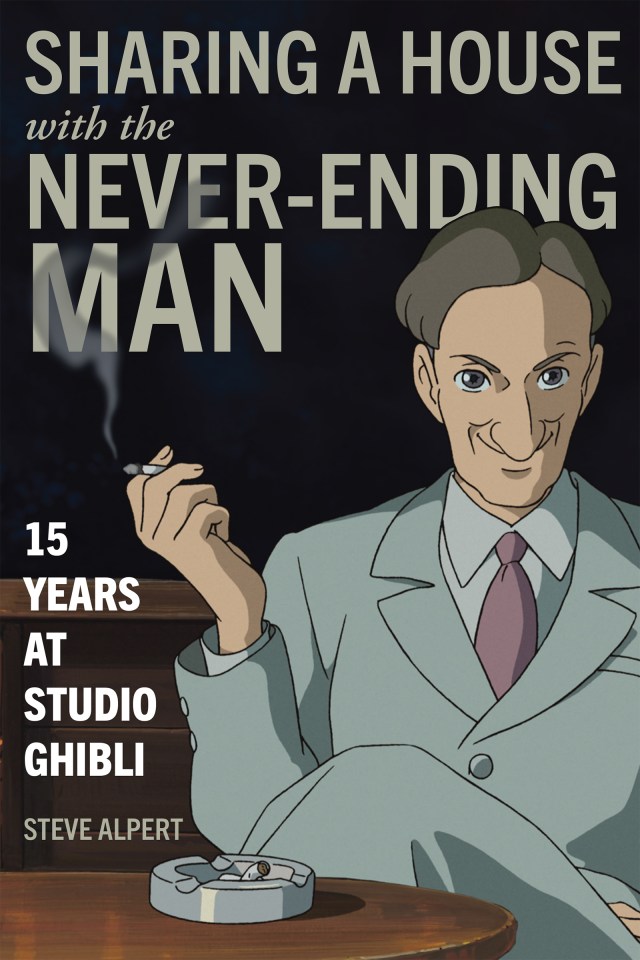
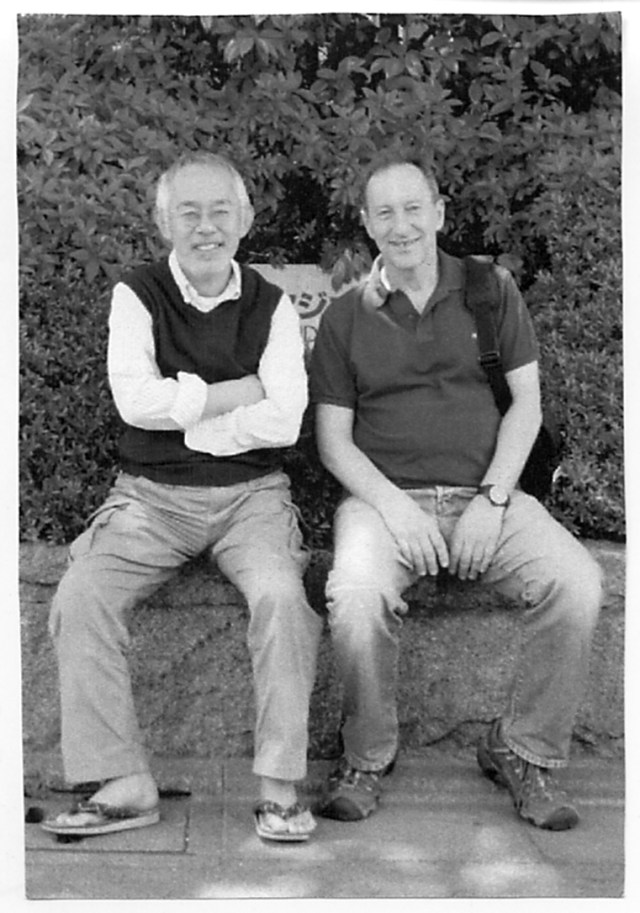
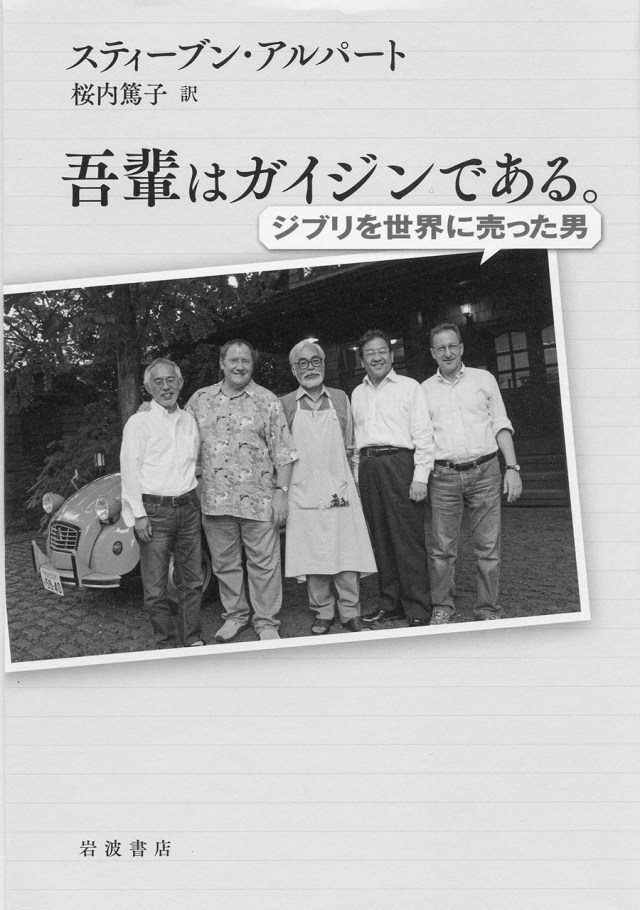
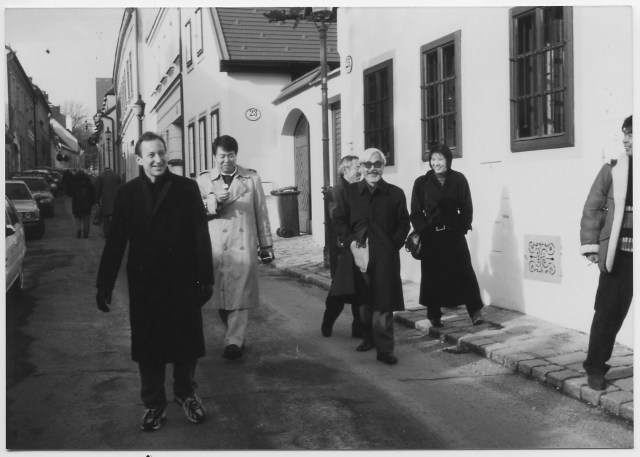
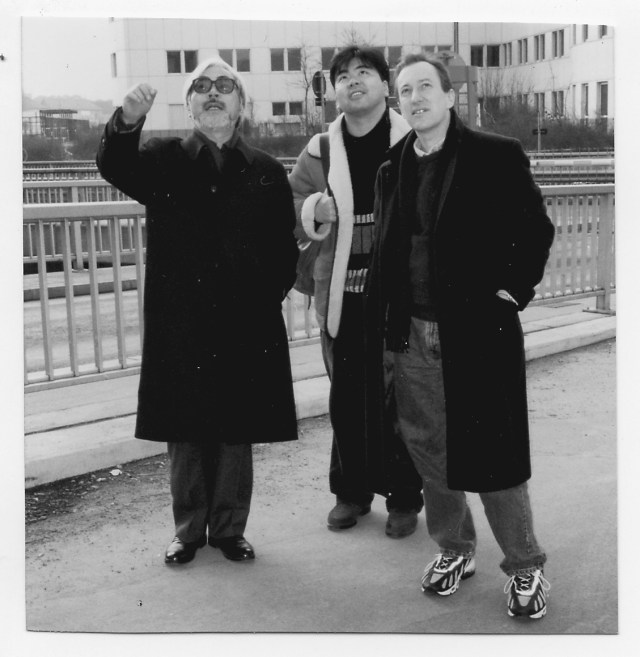
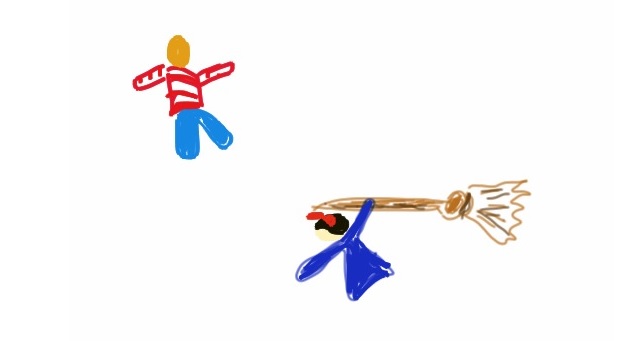
 Tattoos, murder, and a Totoro connection? Studio Ghibli reveals secrets of Princess Mononoke
Tattoos, murder, and a Totoro connection? Studio Ghibli reveals secrets of Princess Mononoke New Studio Ghibli anime coming this winter is first CG feature planned by Hayao Miyazaki
New Studio Ghibli anime coming this winter is first CG feature planned by Hayao Miyazaki New Studio Ghibli exhibition opens in Tokyo, features giant talking Yubaba from Spirited Away
New Studio Ghibli exhibition opens in Tokyo, features giant talking Yubaba from Spirited Away Ghibli co-founder Toshio Suzuki retires as producer
Ghibli co-founder Toshio Suzuki retires as producer Studio Ghibli producer dishes the dirt on Hayao Miyazaki, Your Name, and their next big project
Studio Ghibli producer dishes the dirt on Hayao Miyazaki, Your Name, and their next big project Disillusionment at Tsukiji’s tourist-target prices led us to a great ramen restaurant in Tokyo
Disillusionment at Tsukiji’s tourist-target prices led us to a great ramen restaurant in Tokyo More Than a Capsule Stay: Why Solo Travelers Choose “global cabin Yokohama Chinatown”
More Than a Capsule Stay: Why Solo Travelers Choose “global cabin Yokohama Chinatown” Starbucks Japan releases new zodiac chilled cup drink for 2026
Starbucks Japan releases new zodiac chilled cup drink for 2026 Japan may add Japanese language proficiency, lifestyle classes to permanent foreign resident requirements
Japan may add Japanese language proficiency, lifestyle classes to permanent foreign resident requirements Ultra-premium matcha, koji rice mold star in Starbucks Japanese New Year’s Frappuccino and drinks
Ultra-premium matcha, koji rice mold star in Starbucks Japanese New Year’s Frappuccino and drinks Drunk cycling can result in an instantly suspended driver’s license in Japan
Drunk cycling can result in an instantly suspended driver’s license in Japan Tokyo event lets you travel back in time, for free, to celebrate 100 years since Showa era start
Tokyo event lets you travel back in time, for free, to celebrate 100 years since Showa era start This handsome anime-style security guard will be protecting actual homes and offices in Japan
This handsome anime-style security guard will be protecting actual homes and offices in Japan 7-Eleven Japan starts new temporary luggage storage service in over 300 branches
7-Eleven Japan starts new temporary luggage storage service in over 300 branches Is this the most relaxing Starbucks in Japan?
Is this the most relaxing Starbucks in Japan? Starbucks teams up with 166-year-old Kyoto doll maker for Year of the Horse decorations【Photos】
Starbucks teams up with 166-year-old Kyoto doll maker for Year of the Horse decorations【Photos】 Tokyo’s Tsukiji sushi neighborhood asks tour groups to stay away for the rest of the month
Tokyo’s Tsukiji sushi neighborhood asks tour groups to stay away for the rest of the month Street Fighter Hadouken Churros to be launched and eaten in Tokyo, Okami pudding on offer too
Street Fighter Hadouken Churros to be launched and eaten in Tokyo, Okami pudding on offer too Japanese avoiding domestic travel as foreign tourists increase, possibly creating vicious cycle
Japanese avoiding domestic travel as foreign tourists increase, possibly creating vicious cycle Japanese woman mistaken for bear
Japanese woman mistaken for bear Return of Totoro sequel short anime announced for Ghibli Park
Return of Totoro sequel short anime announced for Ghibli Park Starbucks on a Shinkansen bullet train platform: 6 tips for using the automated store in Japan
Starbucks on a Shinkansen bullet train platform: 6 tips for using the automated store in Japan More Shinkansen trains being added to Japan’s “golden route” to meet traveler demand
More Shinkansen trains being added to Japan’s “golden route” to meet traveler demand Japan’s human washing machines will go on sale to general public, demos to be held in Tokyo
Japan’s human washing machines will go on sale to general public, demos to be held in Tokyo Starbucks Japan unveils new Christmas goods and a rhinestone tumbler that costs 19,500 yen
Starbucks Japan unveils new Christmas goods and a rhinestone tumbler that costs 19,500 yen Japanese train company is letting fans buy its actual ticket gates for their homes
Japanese train company is letting fans buy its actual ticket gates for their homes Is China’s don’t-go-to-Japan warning affecting tourist crowds in Tokyo’s Asakusa neighborhood?
Is China’s don’t-go-to-Japan warning affecting tourist crowds in Tokyo’s Asakusa neighborhood? The 10 best day trips from downtown Tokyo【Survey】
The 10 best day trips from downtown Tokyo【Survey】 Tokyo considering law requiring more trash cans following litter increase in heavily touristed area
Tokyo considering law requiring more trash cans following litter increase in heavily touristed area Nintendo’s Kirby now delivering orders at Kura Sushi restaurants, but not in Japan
Nintendo’s Kirby now delivering orders at Kura Sushi restaurants, but not in Japan Survey asks foreign tourists what bothered them in Japan, more than half gave same answer
Survey asks foreign tourists what bothered them in Japan, more than half gave same answer Japan’s deadliest food claims more victims, but why do people keep eating it for New Year’s?
Japan’s deadliest food claims more victims, but why do people keep eating it for New Year’s? We deeply regret going into this tunnel on our walk in the mountains of Japan
We deeply regret going into this tunnel on our walk in the mountains of Japan Studio Ghibli releases Kodama forest spirits from Princess Mononoke to light up your home
Studio Ghibli releases Kodama forest spirits from Princess Mononoke to light up your home Major Japanese hotel chain says reservations via overseas booking sites may not be valid
Major Japanese hotel chain says reservations via overseas booking sites may not be valid Put sesame oil in your coffee? Japanese maker says it’s the best way to start your day【Taste test】
Put sesame oil in your coffee? Japanese maker says it’s the best way to start your day【Taste test】 The top 10 annoying foreign tourist behaviors on trains, as chosen by Japanese people【Survey】
The top 10 annoying foreign tourist behaviors on trains, as chosen by Japanese people【Survey】 No more using real katana for tourism activities, Japan’s National Police Agency says
No more using real katana for tourism activities, Japan’s National Police Agency says Starbucks Japan reveals new sakura drinkware collection, inspired by evening cherry blossoms
Starbucks Japan reveals new sakura drinkware collection, inspired by evening cherry blossoms A summary of the plot of Studio Ghibli’s Princess Mononoke (by someone who’s never seen it)
A summary of the plot of Studio Ghibli’s Princess Mononoke (by someone who’s never seen it) Why did Hayao Miyazaki agree to release Studio Ghibli anime films on Netflix?
Why did Hayao Miyazaki agree to release Studio Ghibli anime films on Netflix? No Miyazaki, no magic? Studio Ghibli co-founder considering closing production division
No Miyazaki, no magic? Studio Ghibli co-founder considering closing production division Lego models of Ghibli characters pay tribute to Hayao Miyazaki
Lego models of Ghibli characters pay tribute to Hayao Miyazaki Now’s your chance to ask Studio Ghibli ANYTHING you want about Princess Mononoke
Now’s your chance to ask Studio Ghibli ANYTHING you want about Princess Mononoke The Ghibli that no one knows: former animator’s book offers inside look into famed anime studio
The Ghibli that no one knows: former animator’s book offers inside look into famed anime studio Studio Ghibli’s Princess Mononoke getting live-action kabuki adaptation, main cast announced
Studio Ghibli’s Princess Mononoke getting live-action kabuki adaptation, main cast announced Miyazaki’s next project and reaction to latest Ghibli film revealed in interview with Toshio Suzuki
Miyazaki’s next project and reaction to latest Ghibli film revealed in interview with Toshio Suzuki Studio Ghibli says no to trailers and commercials for Hayao Miyazaki’s new anime movie
Studio Ghibli says no to trailers and commercials for Hayao Miyazaki’s new anime movie The Hayao Miyazaki anime we never got – New art book reveals Ghibli legend’s unrealized concepts
The Hayao Miyazaki anime we never got – New art book reveals Ghibli legend’s unrealized concepts Studio Ghibli producer makes bombshell anime revelations during online Q&A
Studio Ghibli producer makes bombshell anime revelations during online Q&A Love Ghibli? Meet Kurosuke, the man who just might have the most amazing Ghibli collection in the world!
Love Ghibli? Meet Kurosuke, the man who just might have the most amazing Ghibli collection in the world! Studio Ghibli co-founder Toshio Suzuki receives lifetime achievement honor at Annie awards
Studio Ghibli co-founder Toshio Suzuki receives lifetime achievement honor at Annie awards Ghibli reveals genre of Hayao Miyazaki’s next anime, and that it’s also working on new CG film
Ghibli reveals genre of Hayao Miyazaki’s next anime, and that it’s also working on new CG film
Leave a Reply